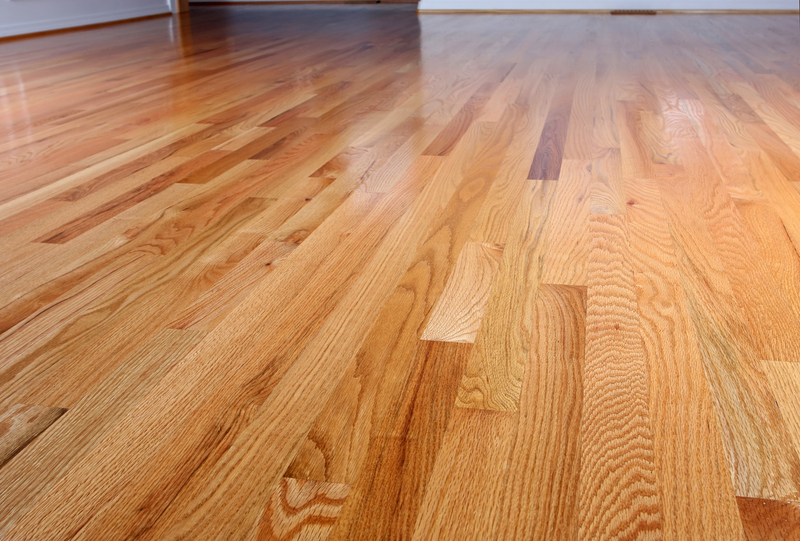Effective Tips for Cleaning Mould on Window Sills
Mould growth on window sills is a common issue in many homes, especially in areas with high humidity or poor ventilation. Not only does it look unsightly, but it can also cause health problems and lead to damage in your home. In this comprehensive guide, we'll discuss the most effective methods for cleaning mould on window sills, prevention tips, and answers to frequently asked questions. Whether you're dealing with black mould, mildew, or mysterious stains, follow these proven strategies for a cleaner, healthier living environment.
Why is Mould on Window Sills a Problem?
Mould can cause a range of issues, from structural damage to negative health effects--and window sills are particularly vulnerable. Before diving into cleaning tips, let's understand why removing mould from window sills is so crucial:
- Health Risks: Mould spores can trigger allergies, respiratory issues, and irritate the skin and eyes, particularly in those with weak immune systems.
- Structural Damage: If left unchecked, mould can eat away at wooden window sills, weaken frames, and eventually cause expensive repairs.
- Unpleasant Odors & Stains: Mould emits a musty smell and leaves dark, unsightly stains on window sills and frames.

What Causes Mould on Window Sills?
Understanding the root causes of mould growth can help prevent future outbreaks. The main reasons for mould developing on window sills include:
- Excess Moisture: Humidity, leaks, condensation, and poor ventilation all contribute to dampness that fosters mould growth.
- Lack of Sunlight: Warm, dark places are ideal breeding grounds for mould, so shaded window sills are especially vulnerable.
- Poor Cleaning Habits: Dust, debris, and organic matter left on window sills create a food source and surface for mould spores to settle.
Safety First: Preparing for Mould Removal
*Before starting your mould removal process, it's important to stay safe.* Here are essential safety tips when cleaning mould from window sills:
- Wear protective gloves, a face mask (N95 or similar), and safety goggles to avoid touching or inhaling mould spores.
- Ensure proper ventilation - open windows and doors to keep fresh air flowing during cleaning.
- Use dedicated cleaning tools (cloths, brushes) and dispose of them after use to prevent spreading spores elsewhere.
- Keep pets and children away from the area while you work.
Step-by-Step Guide: How to Clean Mould from Window Sills
1. Gather Your Cleaning Supplies
Having the right tools at hand makes the mould removal process much easier. Here's what you'll need for effective mould cleaning on window sills:
- Protective gear (mask, gloves, goggles)
- Bucket of warm water
- Household cleaner or mould remover - You can use white vinegar, hydrogen peroxide, or a commercial anti-mould solution.
- Soft-bristled brush or old toothbrush
- Non-abrasive sponge or microfiber cloth
- Spray bottle
- Paper towels or dry cloth
2. Remove Loose Debris and Dust
*Begin by gently brushing away dust and loose particles from the window sill. This prevents spreading mould spores and allows the cleaning solution to reach affected areas more effectively.*
3. Apply the Cleaning Solution
There are several proven solutions for cleaning mould off window sills. Here are the most commonly used methods:
- White Vinegar: Vinegar kills 80% of mould species. Fill a spray bottle with undiluted white vinegar, generously spray the mouldy area, and let it sit for at least 1 hour.
- Hydrogen Peroxide: A 3% hydrogen peroxide solution works as an antifungal and antibacterial agent. Spray directly and let sit for 10-15 minutes.
- Baking Soda Paste: Mix a tablespoon of baking soda and water to create a paste. Apply it with a brush onto the affected area.
- Commercial Anti-mould Spray: These are effective on tough spots but check the label for suitability on window sill materials.
4. Scrub the Mould Away
*With gloves on, take a brush or sponge and gently scrub the mouldy areas in a circular motion. Avoid scrubbing too harshly, particularly on wood or painted surfaces, to prevent damage.*
5. Wipe and Rinse Thoroughly
Use a clean, damp cloth to wipe off the mould residue and excess cleaning solution. For optimal results, rinse with clean water to remove any leftover cleaner.
6. Dry the Area Completely
_Mould thrives in moist environments_. Thoroughly dry your window sill with a paper towel, clean dry cloth, or allow ample ventilation. This step prevents new mould from appearing.
Natural Remedies for Removing Mould from Window Sills
Many homeowners prefer using natural alternatives to clean mould on window frames and sills. Here are some of the most effective eco-friendly methods:
- Tea Tree Oil: Add one teaspoon of tea tree oil to one cup of water. Spray, let sit, then wipe off. It is antifungal and safe for most surfaces.
- Lemon Juice: Its acid naturally breaks down mould and leaves a fresh scent. Combine lemon juice and water 1:1 for a quick wipe-down.
- Baking Soda: Not only cleans but also helps deodorize your window sill.
- Vinegar: As mentioned above, white vinegar is one of the most powerful, non-toxic solutions for killing window mould.
How to Prevent Mould from Returning to Window Sills
Once you've removed the mould, it's important to prevent future outbreaks. Here are practical tips for keeping window sills mould-free:
- Improve Ventilation: Open windows regularly and use exhaust fans to reduce humidity indoors.
- Wipe Down Condensation: During cold or rainy weather, moisture can build up on windows and sills. Regularly wiping away condensation keeps surfaces dry.
- Use Dehumidifiers: Especially in high-humidity rooms like bathrooms and kitchens, dehumidifiers can lower moisture and prevent mould.
- Inspect Windows and Seals: Fix leaks and seal gaps around windows to block water ingress that feeds mould.
- Regular Cleaning: Dust and clean sills frequently to limit dust accumulation--a key food source for mould.
- Install UV Strips or Sunlight Exposure: Sunlight inhibits mould - open curtains or consider installing UV light strips in gloomy areas.
Special Considerations for Different Types of Window Sills
Cleaning Mould from Wooden Window Sills
Wood is porous, making it particularly susceptible to mould growth. For wooden window sills:
- Do not oversaturate with water - use a damp cloth and dry promptly to prevent warping.
- Consider a gentle baking soda paste or diluted vinegar for safe cleaning.
- Sand lightly (if needed) after cleaning and reseal the surface with varnish if the finish was damaged.
Cleaning Mould from uPVC or Plastic Window Sills
- uPVC is less prone to mould but dirt and moisture still enable growth.
- Use non-abrasive cleaners or mild vinegar solution; avoid harsh chemicals that may scratch the plastic.
- Ensure proper drying to minimize streaks or water marks.
Cleaning Mould from Painted or Sealed Window Sills
- Test your cleaning solution on a small area first to check for discoloration.
- If paint is peeling, remove loose bits and repaint after full drying.
When Should You Call a Professional?
While most cases of window mould can be safely handled at home, it's wise to call in professional help if:
- The mould covers an area greater than one square meter.
- The mould keeps returning despite thorough cleaning and preventive measures.
- You observe structural damage to the window, wood rot, or persistent leaks.
- Anyone in the home experiences severe allergic reactions or respiratory issues traced to mould exposure.

Frequently Asked Questions about Cleaning Mould on Window Sills
Is it Safe to Clean Mould Myself?
Yes, if you take proper precautions. Wear gloves, a mask, and goggles, and avoid disturbing mould colonies by vacuuming or dry-brushing.
Can Bleach be Used for Cleaning Window Sill Mould?
Bleach is effective on non-porous surfaces such as tiles and plastics, but it's not recommended for wood or painted window sills. It doesn't always penetrate porous surfaces effectively and may release harmful fumes. Vinegar or hydrogen peroxide are better alternatives.
How Often Should Window Sills be Checked for Mould?
Check your window sills for mould every few weeks during humid months, or more frequently in bathrooms and kitchens where moisture collects.
What Should I Avoid When Cleaning Window Sills?
- Don't use abrasive pads or harsh scrubbing tools that can damage surfaces.
- Avoid mixing different cleaning chemicals together.
- Never paint over mould without removing it first; this traps moisture and causes further problems.
Conclusion: Keep Your Home Healthy by Keeping Window Sills Mould-Free
Mould on window sills is more than just a cosmetic nuisance--it can undermine your health and your property's value. With these effective window sill mould removal tips and smart prevention strategies, you can keep your home fresh, clean, and inviting. Remember, early intervention is the key to easy clean-up and keeping costly repairs at bay.
For more home care and cleaning advice, explore our resources and ensure your family stays safe and your living spaces sparkling!
```

